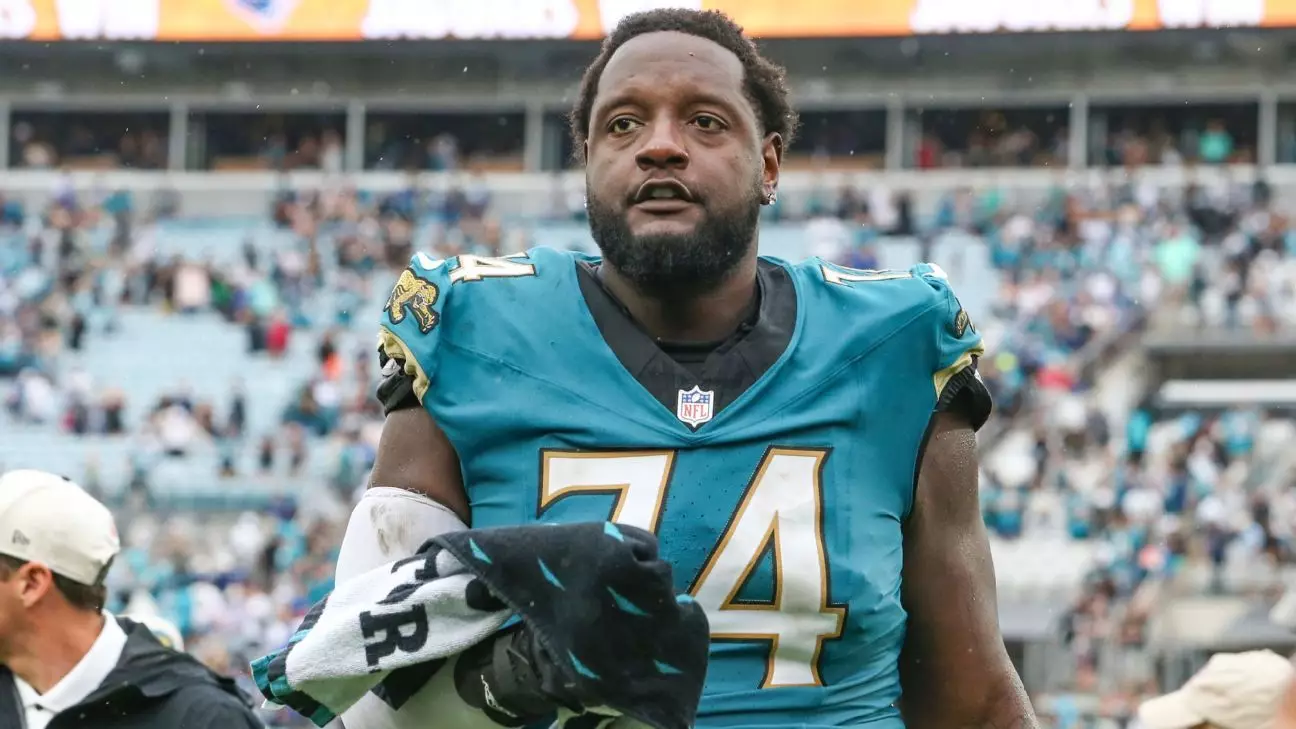In a critical move to address their offensive line woes, the Minnesota Vikings have traded for left tackle Cam Robinson from the Jacksonville Jaguars. With starting tackle Christian Darrisaw sidelined due to a serious knee injury, the acquisition of Robinson is not just timely but essential for the stability of the team’s offensive strategy. The Vikings’ remarkable 5-2 start to the season now faces the challenge of maintaining momentum in light of Darrisaw’s significant absence.
Darrisaw’s injury, characterized as a torn ACL and MCL in his left knee, occurred during a tumultuous 30-20 defeat against the Los Angeles Rams. The young tackle had become a vital cog in the Vikings’ offensive machinery after signing a four-year contract extension earlier this season, solidifying his role on the team. Although he is expected to return next season, the Vikings need an immediate solution to continue competing effectively.
As per reports, the Vikings obtained Robinson along with a conditional seventh-round pick for 2026, while sending a conditional fifth-round selection that could upgrade to a fourth-rounder back to Jacksonville. This trade indicates a clear commitment by the Vikings to not only address current needs but also to consider long-term implications for their roster. Robinson, who has a substantial contract worth $16.25 million in its final year, will have a portion of his salary covered by the Jaguars.
Robinson’s arrival comes at a time when the Vikings are evaluating their offensive line, traditionally a critical element in player development and success. While the veteran backup, David Quessenberry, momentarily filled in for Darrisaw, head coach Kevin O’Connell hinted at exploring multiple strategies to strengthen the position further, suggesting other players might be reshuffled within the line. The possibility of moving Blake Brandel from left guard to tackle reflects the Vikings’ flexible approach in adjusting their lineup to maintain competitiveness.
Despite being a former second-round pick, Robinson’s tenure in the NFL has been marred by inconsistencies—including injuries and a recent benching in favor of fellow Jaguar Walker Little. This season alone has seen Robinson suspended for drug violations and later hindered by knee issues, limiting his playing time. He has managed just one fully played season since being drafted in 2017 and has an injury history that raises questions about his reliability.
Yet, Robinson’s career statistics present a case for optimism: he boasts an impressive pass-block win rate of 81.7%. When on the field, he showcases potential that aligns well with what the Vikings seek in their offensive unit. If he can regain form, Robinson may provide a stabilizing force on the line, helping to protect quarterback Kirk Cousins and facilitate the running game.
With only 10 games remaining in the regular season, the urgency for the Vikings to adapt their offensive line is palpable. Especially with back-to-back games approaching against strong contenders like the Indianapolis Colts, the importance of an effective front cannot be overstated. Will Robinson’s integration into the system happen seamlessly, or will the Vikings need to grapple with adaptation issues amidst the ongoing adjustments?
Darrisaw’s tantalizing potential looms large in the background as the team braces for the interim. The rookie’s contract reflects confidence in his abilities, but the franchise must now underline depth in their roster to navigate the uncertainties of injuries in critical positions.
Their success in the games ahead will not only hinge on Robinson but will also test the entire offensive setup. This transaction ultimately reflects the Vikings’ proactive approach in the face of adversity, underscoring a team determined to build resilience throughout the season. As Vikings fans look forward to seeing Robinson in action, the broader team dynamics and their ability to adjust will surely shape the narrative for the remainder of the season.

Leave a Reply